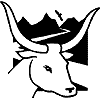HNV Showcases
Islay – more than whisky
Mixed farmland
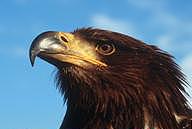 The areas of open moorland, rough grazing pastures and coastal cliffs form the hunting territories of many predatory birds including the golden eagle. Varied vegetation as a result of different grazing pressure, high densities of hares and rabbits together with minimal human disturbance provide ideal conditions. In the Spring they sometimes prey on young lambs.
The areas of open moorland, rough grazing pastures and coastal cliffs form the hunting territories of many predatory birds including the golden eagle. Varied vegetation as a result of different grazing pressure, high densities of hares and rabbits together with minimal human disturbance provide ideal conditions. In the Spring they sometimes prey on young lambs.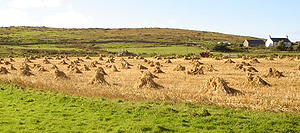 Traditionally farmers would grow oats as winter feed for cattle. The amount of winter fodder partly determined the stocking density of the summer pastures. Some farms still grow oats but it is seldom harvested the traditional way. This involves cutting with a reaper/binder (it cuts the crop and ties sheaves). These are manually made into “stooks” (6 sheaves/stook) to allow the crop to dry. The sheaves are then stored in stacks built on stone circles in a “stack-yard”.
Traditionally farmers would grow oats as winter feed for cattle. The amount of winter fodder partly determined the stocking density of the summer pastures. Some farms still grow oats but it is seldom harvested the traditional way. This involves cutting with a reaper/binder (it cuts the crop and ties sheaves). These are manually made into “stooks” (6 sheaves/stook) to allow the crop to dry. The sheaves are then stored in stacks built on stone circles in a “stack-yard”. During winter whole oat sheaves are fed (2 sheaves/day/cow). Oats cut green - with a milky seed - and harvested in this way are a very nutritious cattle food.
The protracted harvesting time using this method provides many feeding opportunities in the field for insects, birds, and small mammals as does the stubble after the field is cleared.
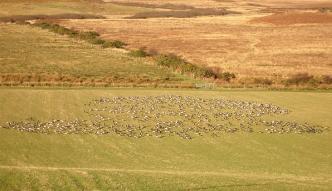
Huge numbers of Arctic geese spend the winter months in the Hebrides. Islay provides the geese with safe roosting areas: shallow sea lochs for Barnacle geese (Loch Gruinart, Loch Indaal) and numerous remote hill lochs for Greenland Whitefronted goose.
During the day the geese feed on agricultural grasslands – this has lead to conflict between geese and farmers. For many years a variety of goose management schemes have been providing compensation for damage to agricultural grasslands.
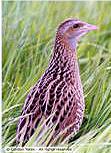 Intensively managed rotational grasslands produce silage for feeding cattle and sheep during winter. These fields are of little botanical interest but attract most of the wintering geese. Also, after cutting many farmland birds (e.g. Chough) take advantage of the aftermath and the exposed invertebrates.
Intensively managed rotational grasslands produce silage for feeding cattle and sheep during winter. These fields are of little botanical interest but attract most of the wintering geese. Also, after cutting many farmland birds (e.g. Chough) take advantage of the aftermath and the exposed invertebrates.If cut later in the year (August), the same fields can provide nesting places for the corncrake; a bird typical of meadows as well as tall vegetation close to pastures.
The most valuable grasslands for conservation are the unfertilised hay meadows. They are floristically rich and have a large number of insects associated with them.
Blackface sheep and most suckler cows spend the entire year on semi-natural grasslands (moor, heath, Molinia grasslands, coastal areas). Grazing density on Islay farms range from 0.2 to 0.4 LU/ha. This low grazing pressure produces a mosaic of vegetation types and structures, which benefits many species; even those with demanding requirements such as Butterfly Orchid (Platanthera spp.), Marsh Fritillary (Euphydryas aurinia), Forester Moth (Adscita sp.) and Chough.
Kindrochaid farm is part of an extensively managed sheep and cattle farm. The landscape consists of a mosaic of cliff communities, calcareous grassland, wet and dry heaths, mires, still and running water. Animals include many of the species for which Islay is well known (e.g. chough, marsh fritillary, adder).
Although current farm management is maintaining the status quo, much of the high nature value relates to physical and biological features created under former systems of management.
Although current farm management is maintaining the status quo, much of the high nature value relates to physical and biological features created under former systems of management.
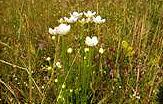 Parnassia palustris (Grass of Parnassus) - a plant of Molinia grasslands
Parnassia palustris (Grass of Parnassus) - a plant of Molinia grasslands

